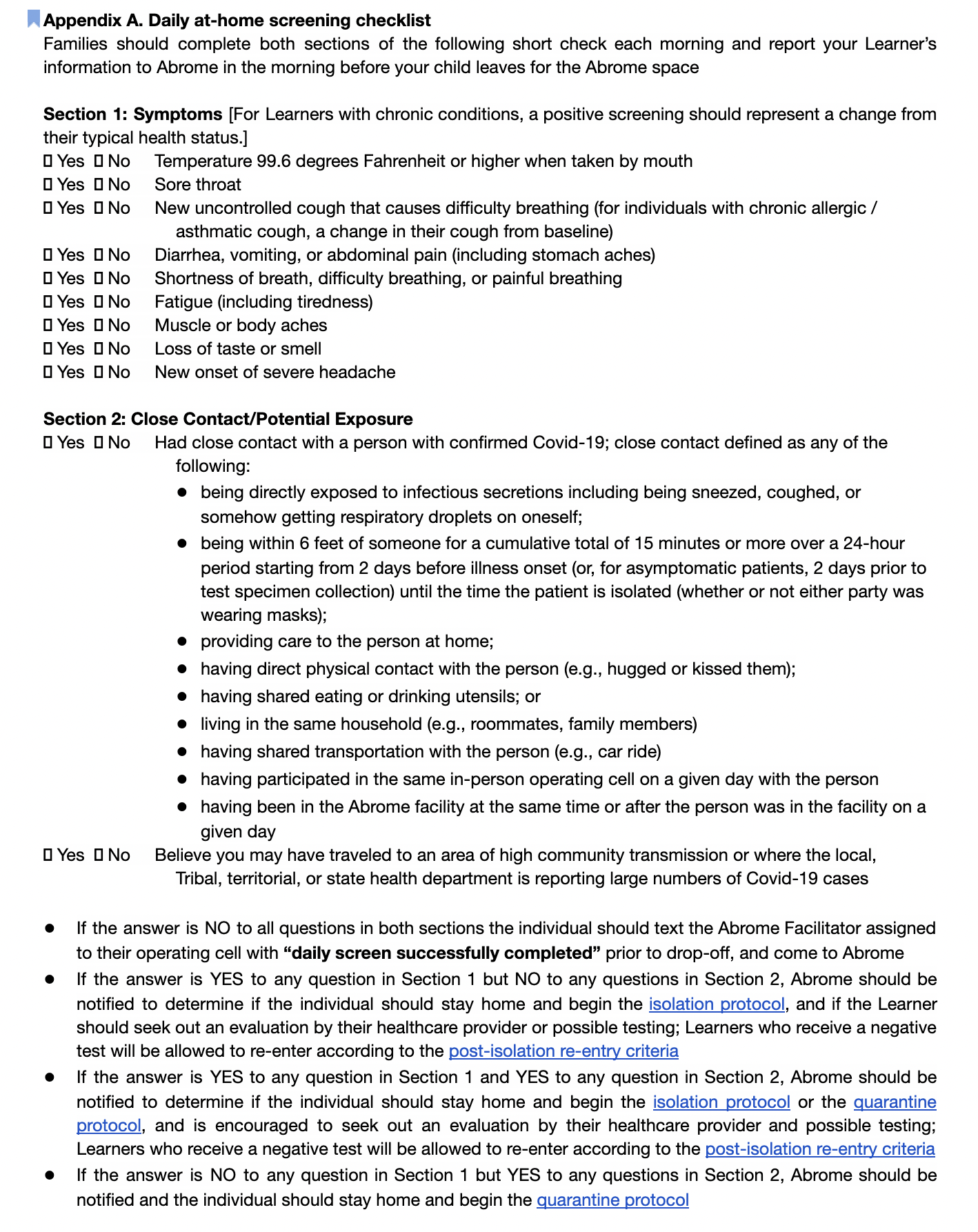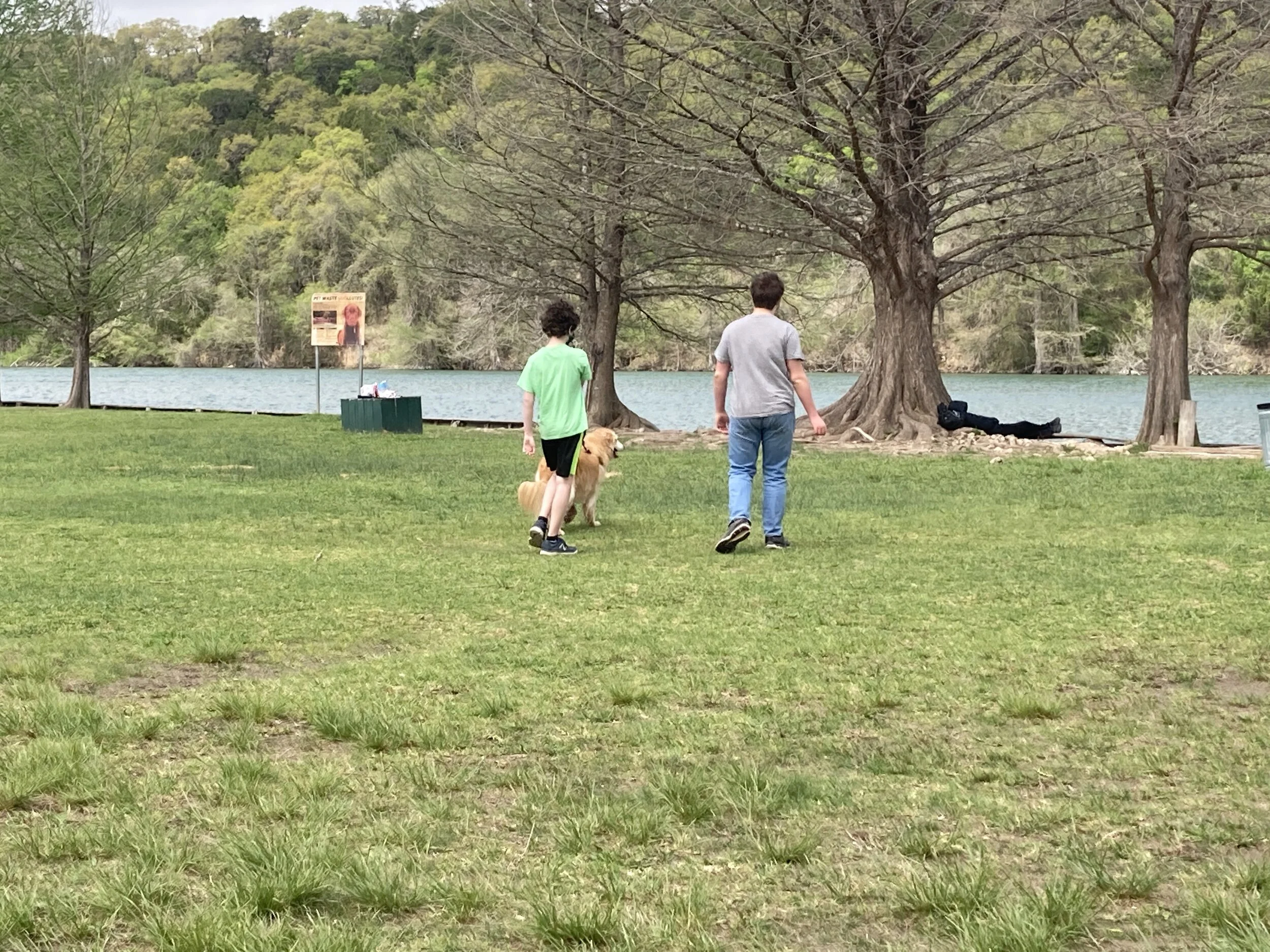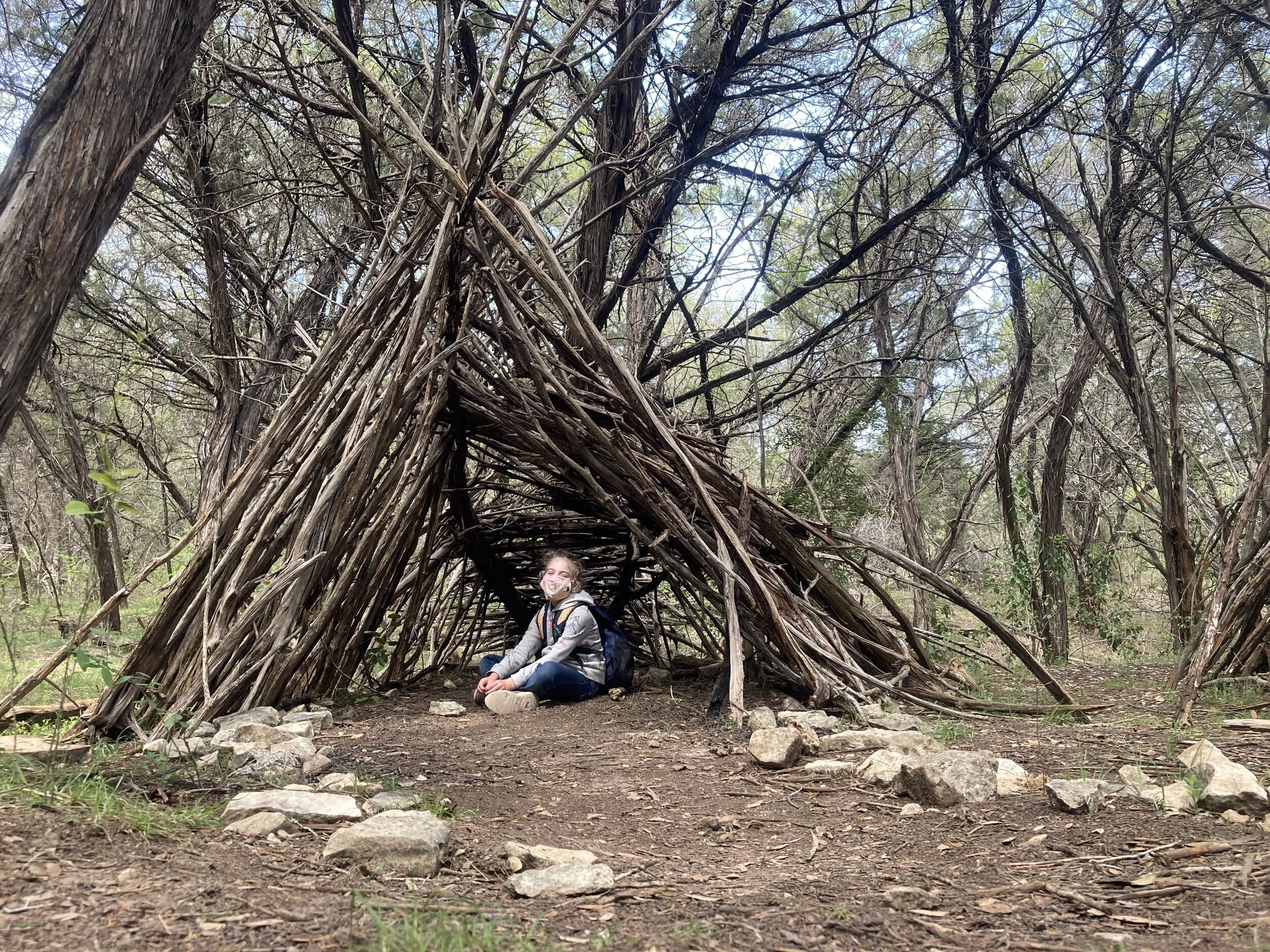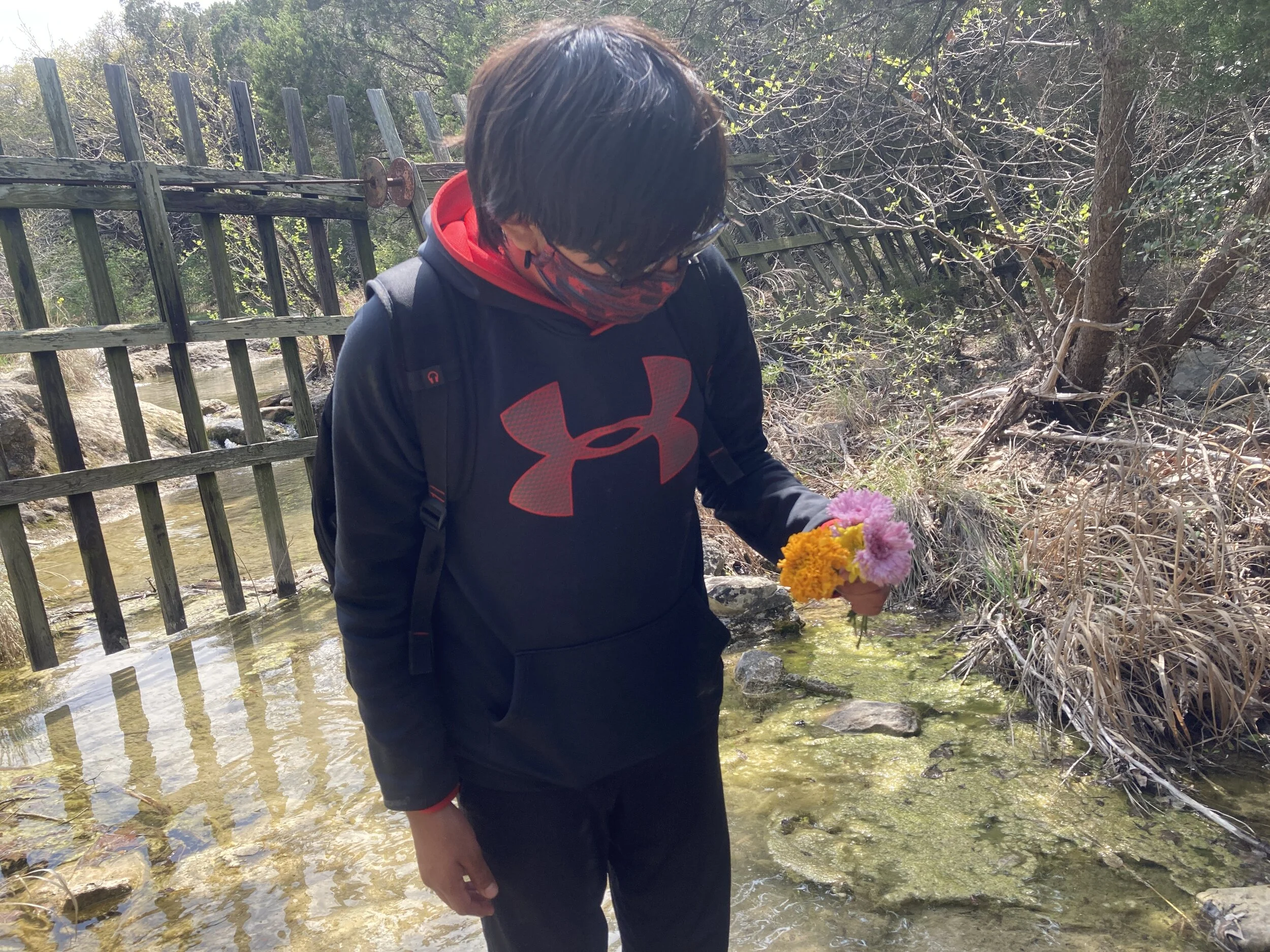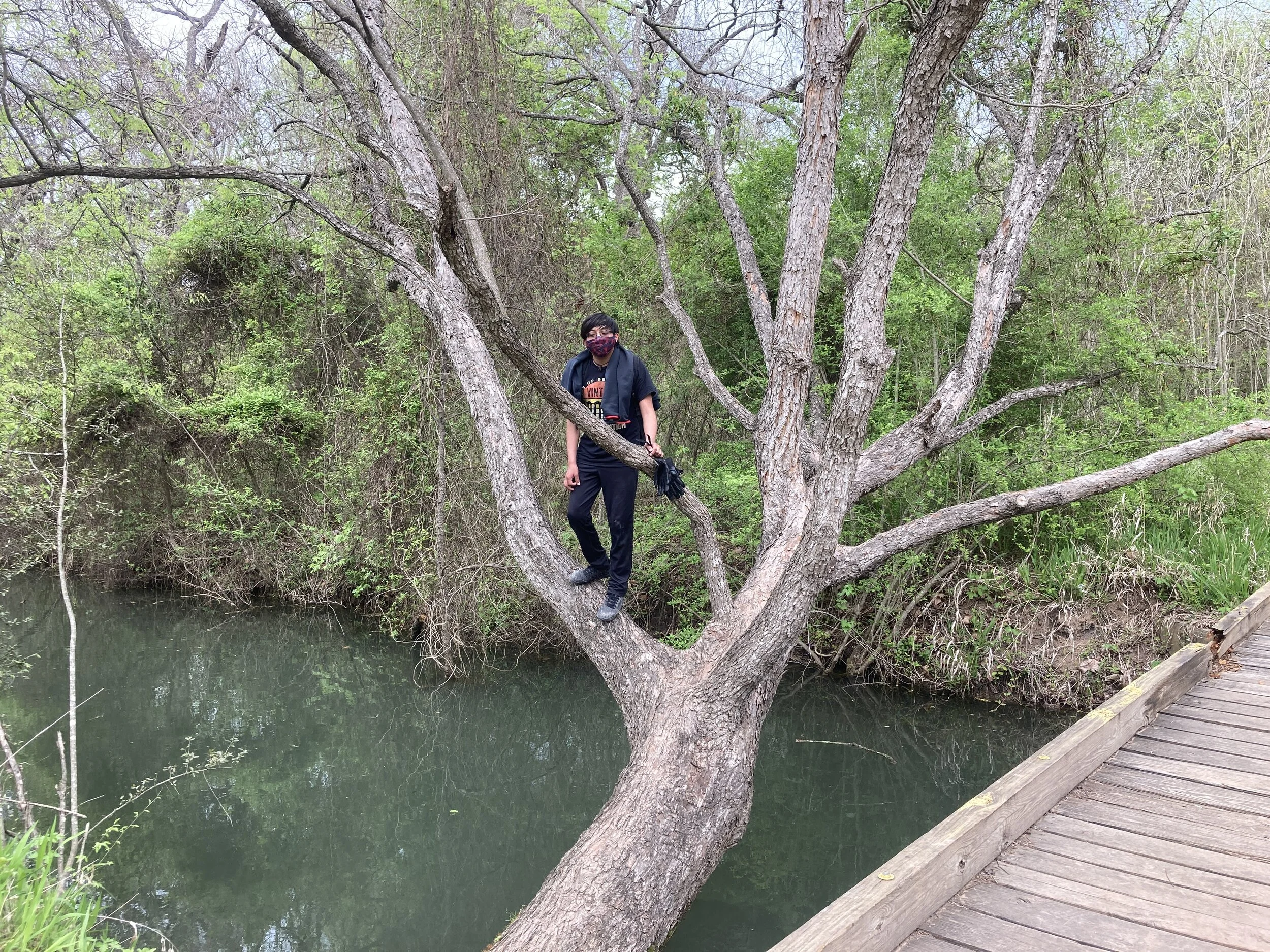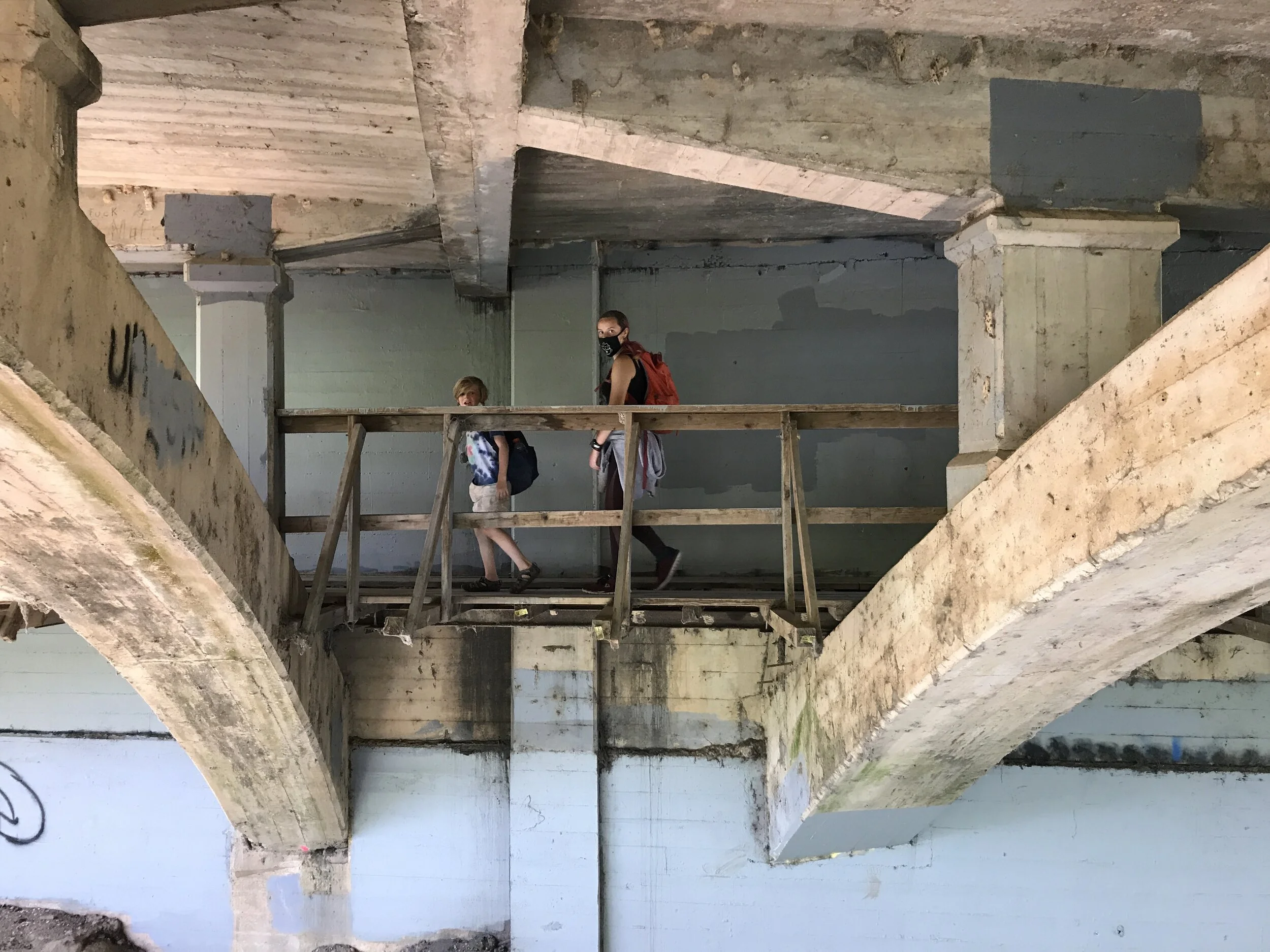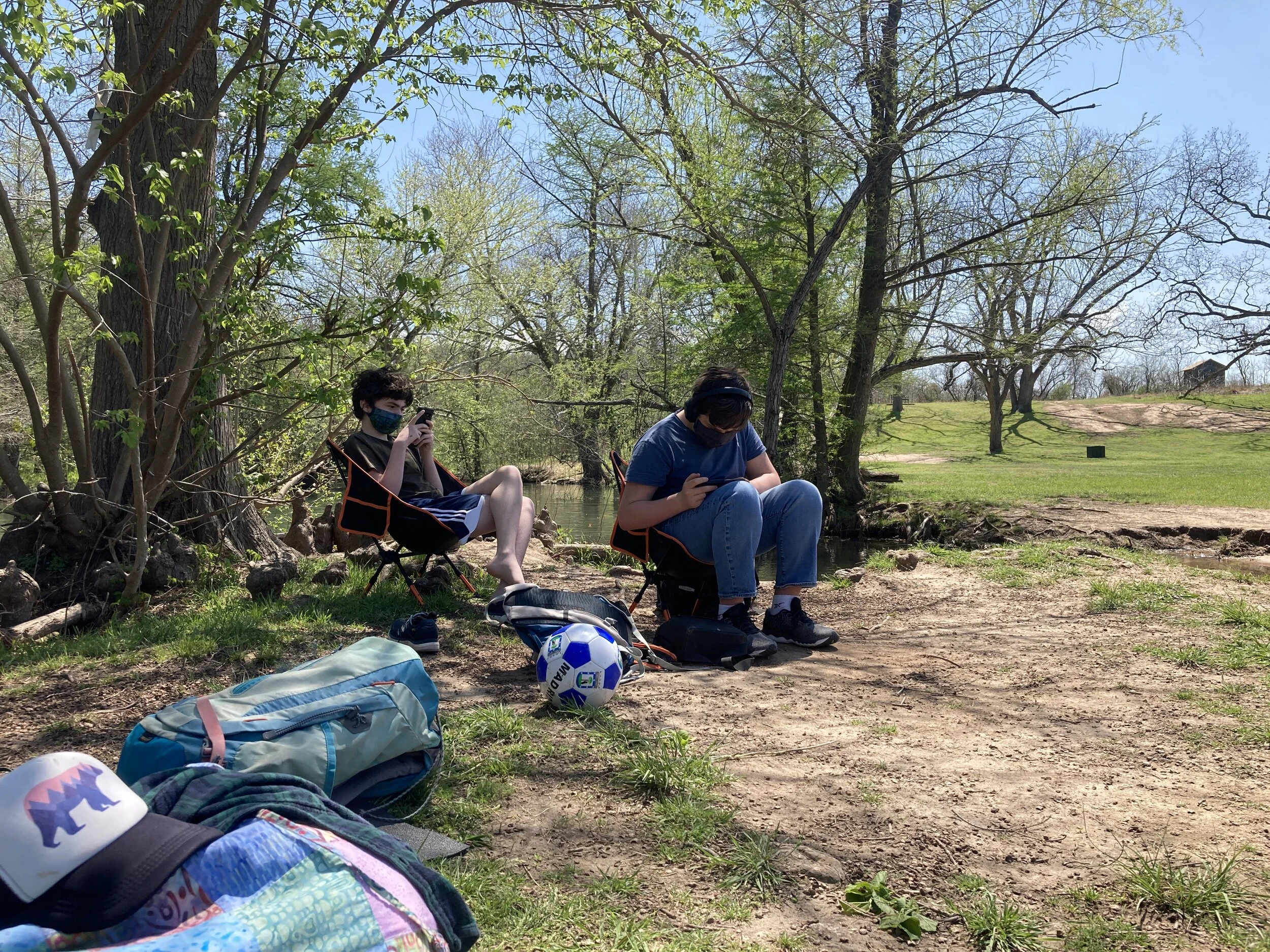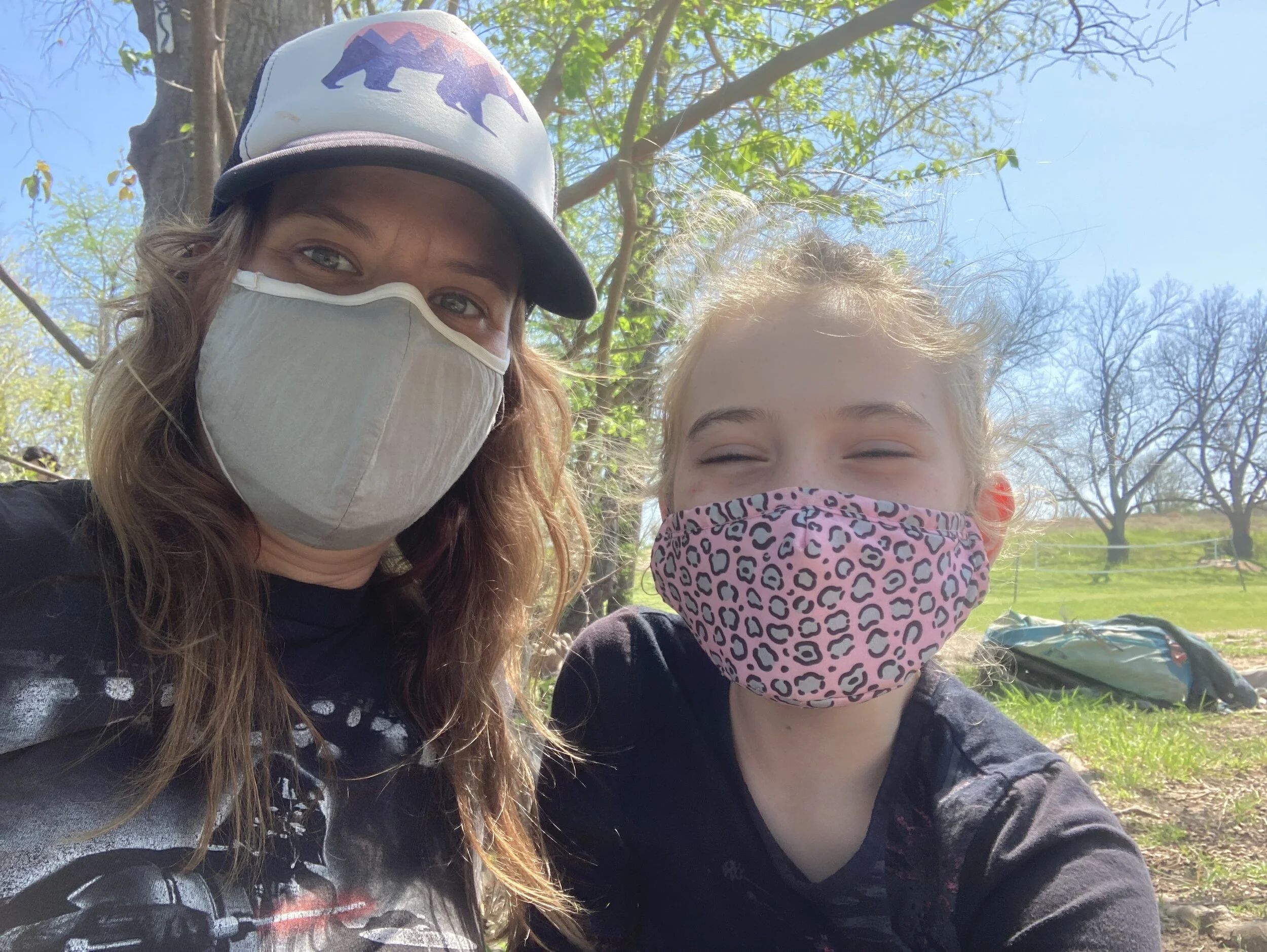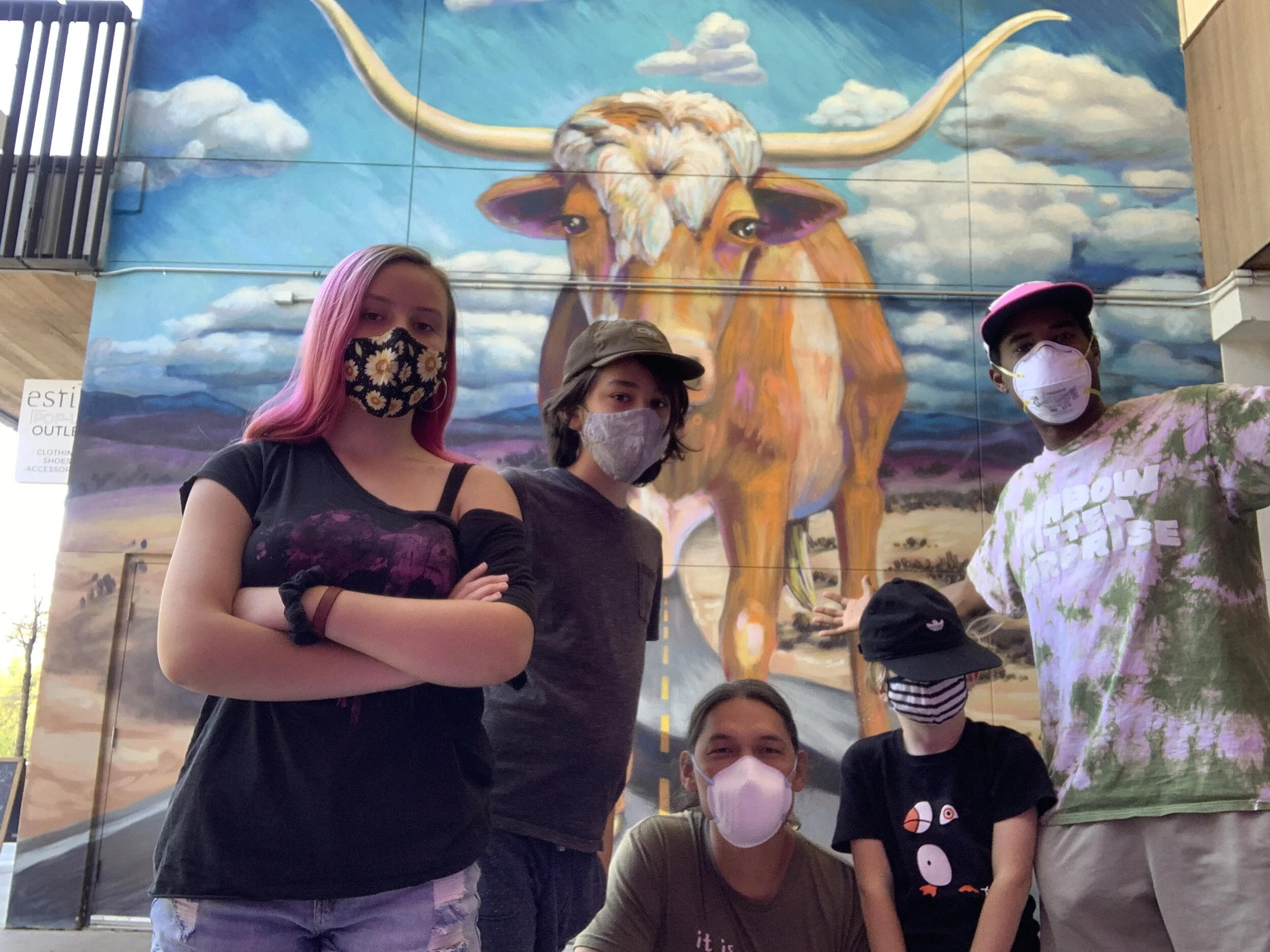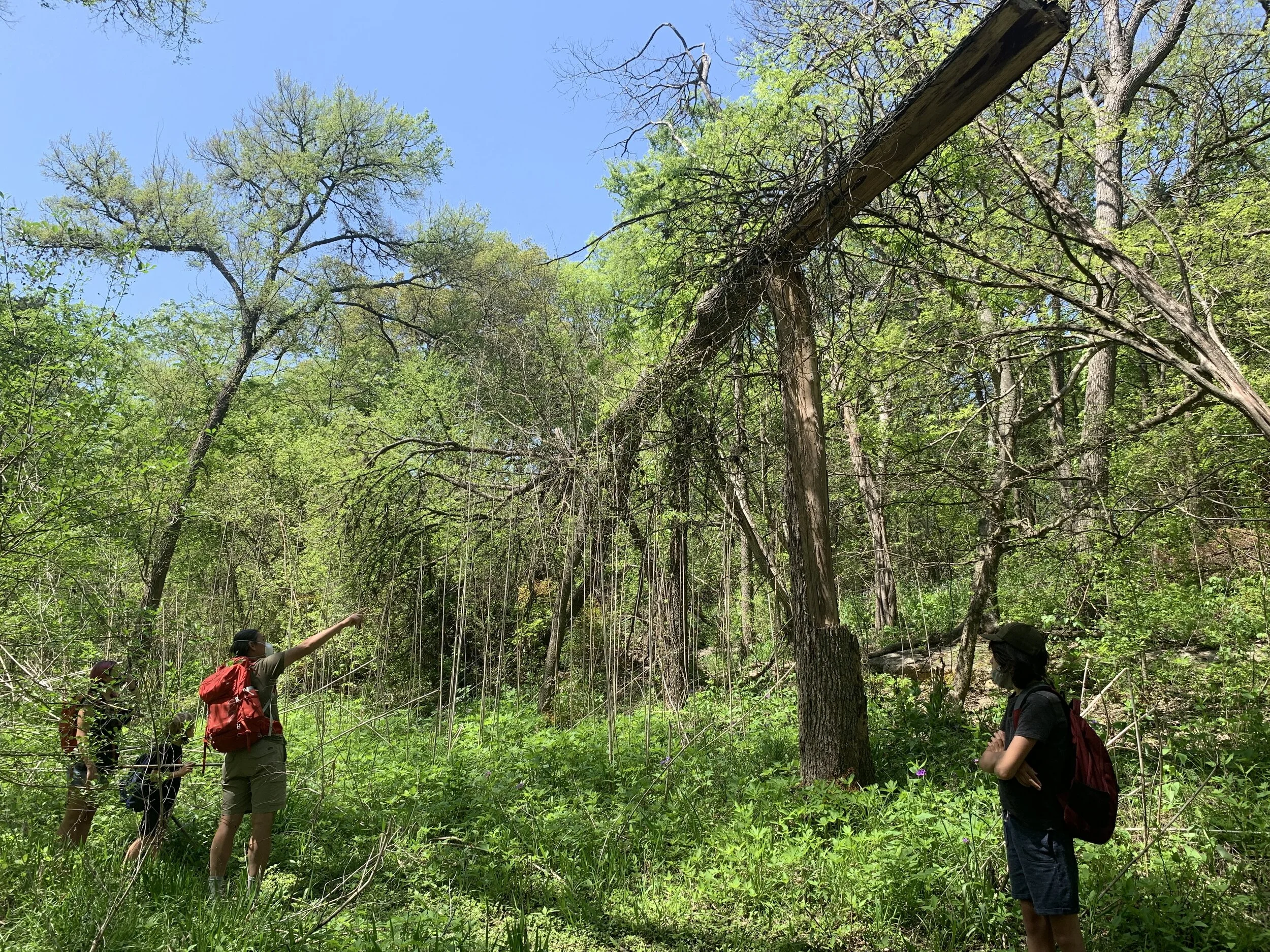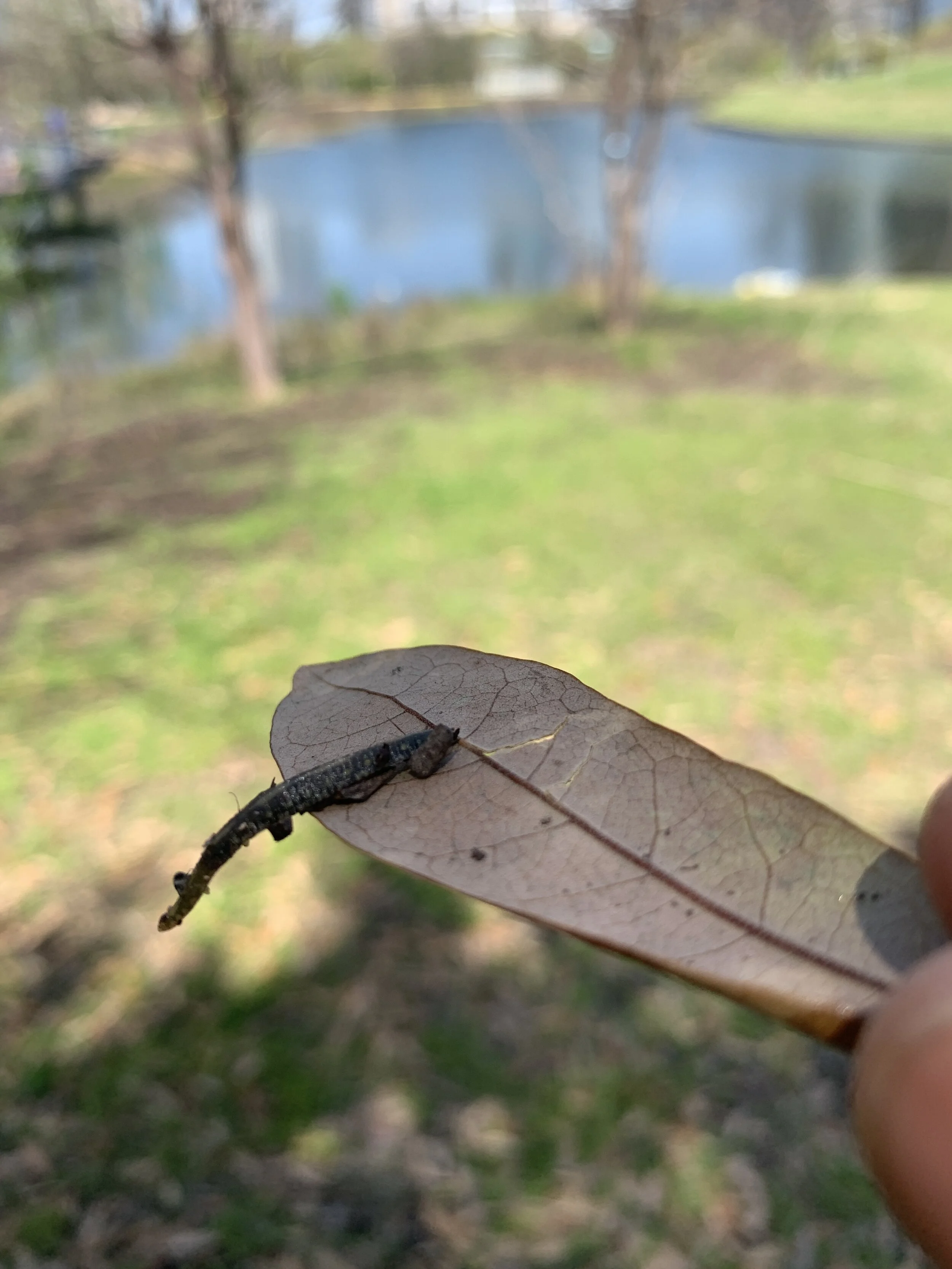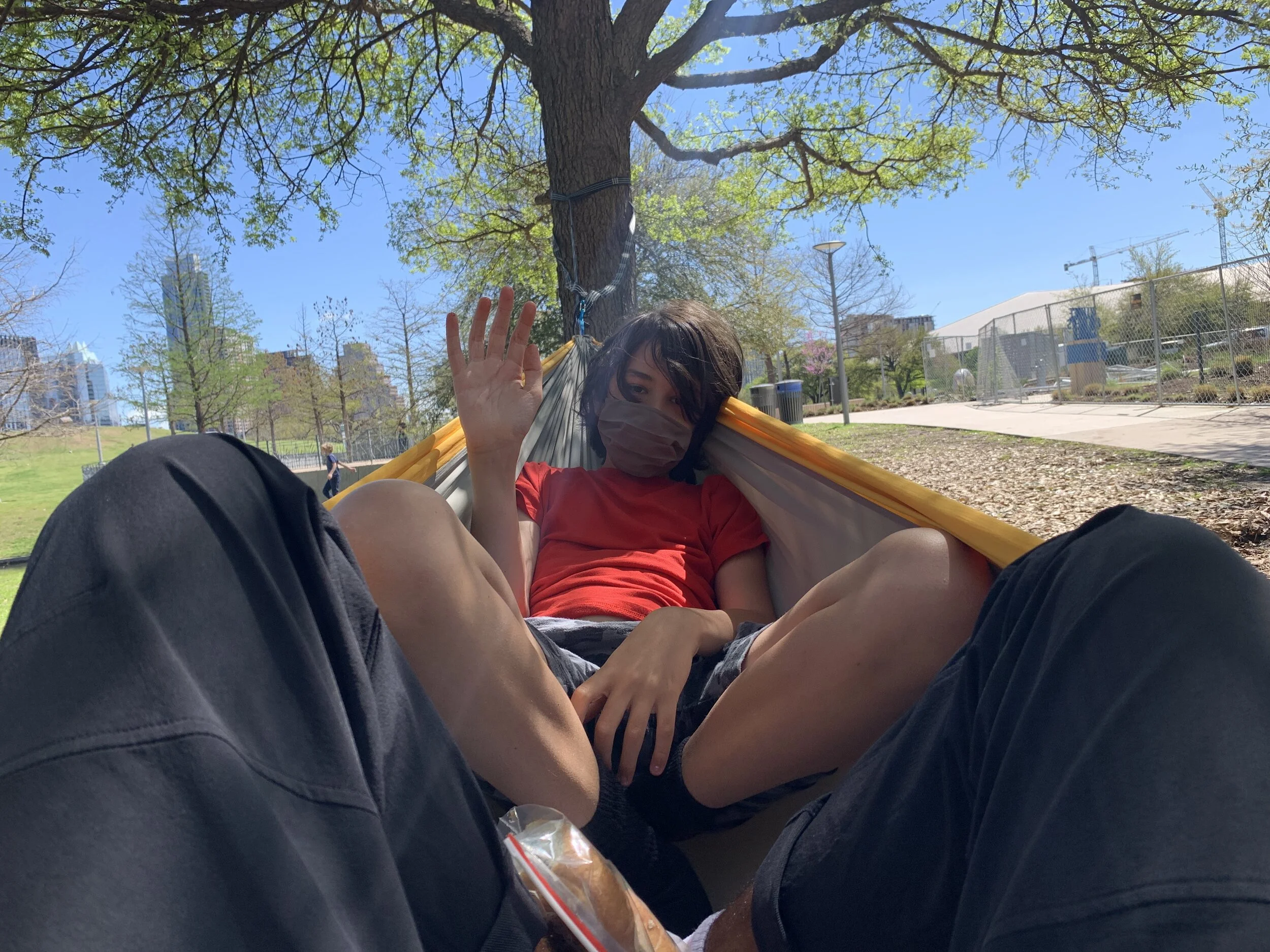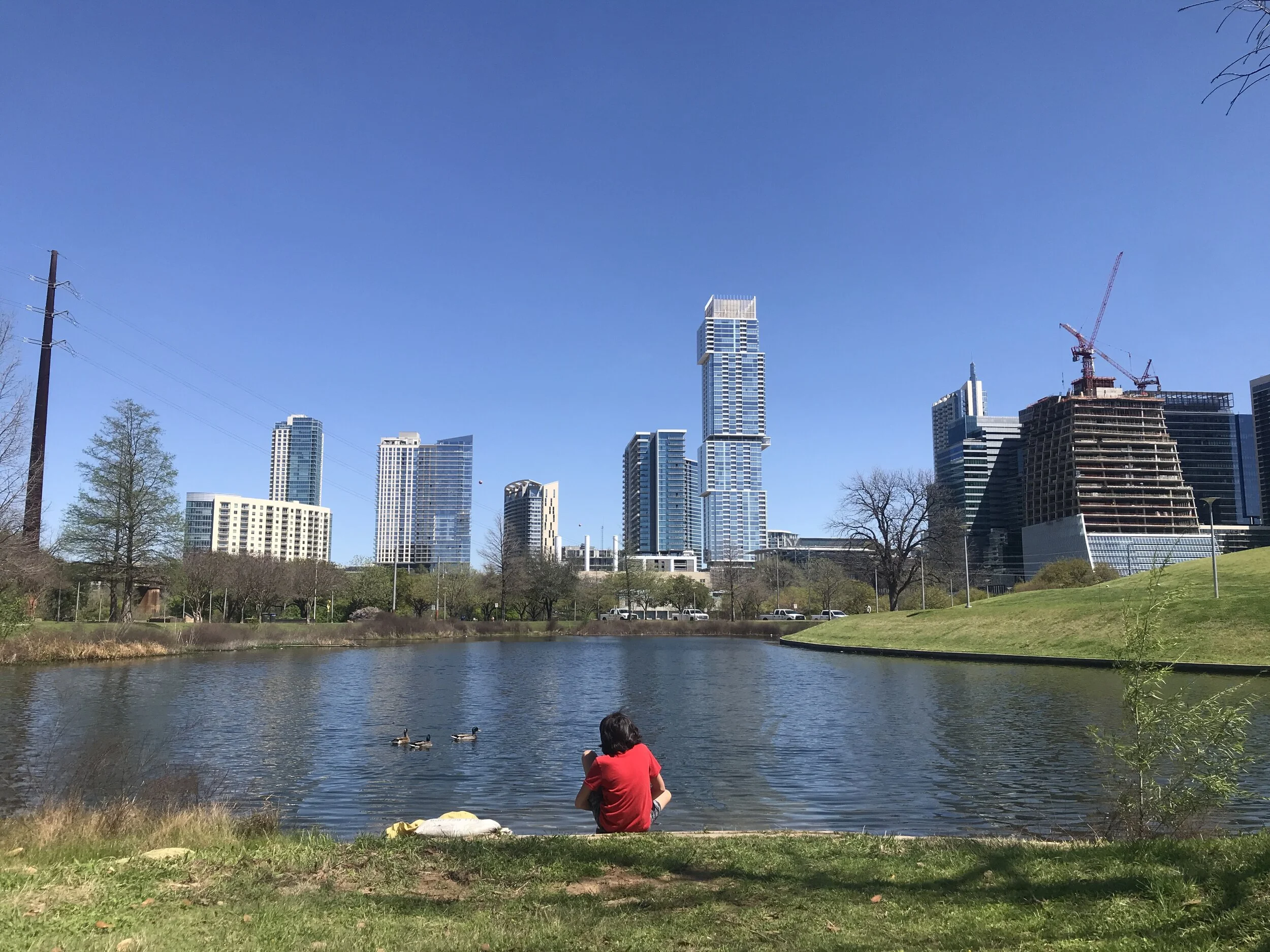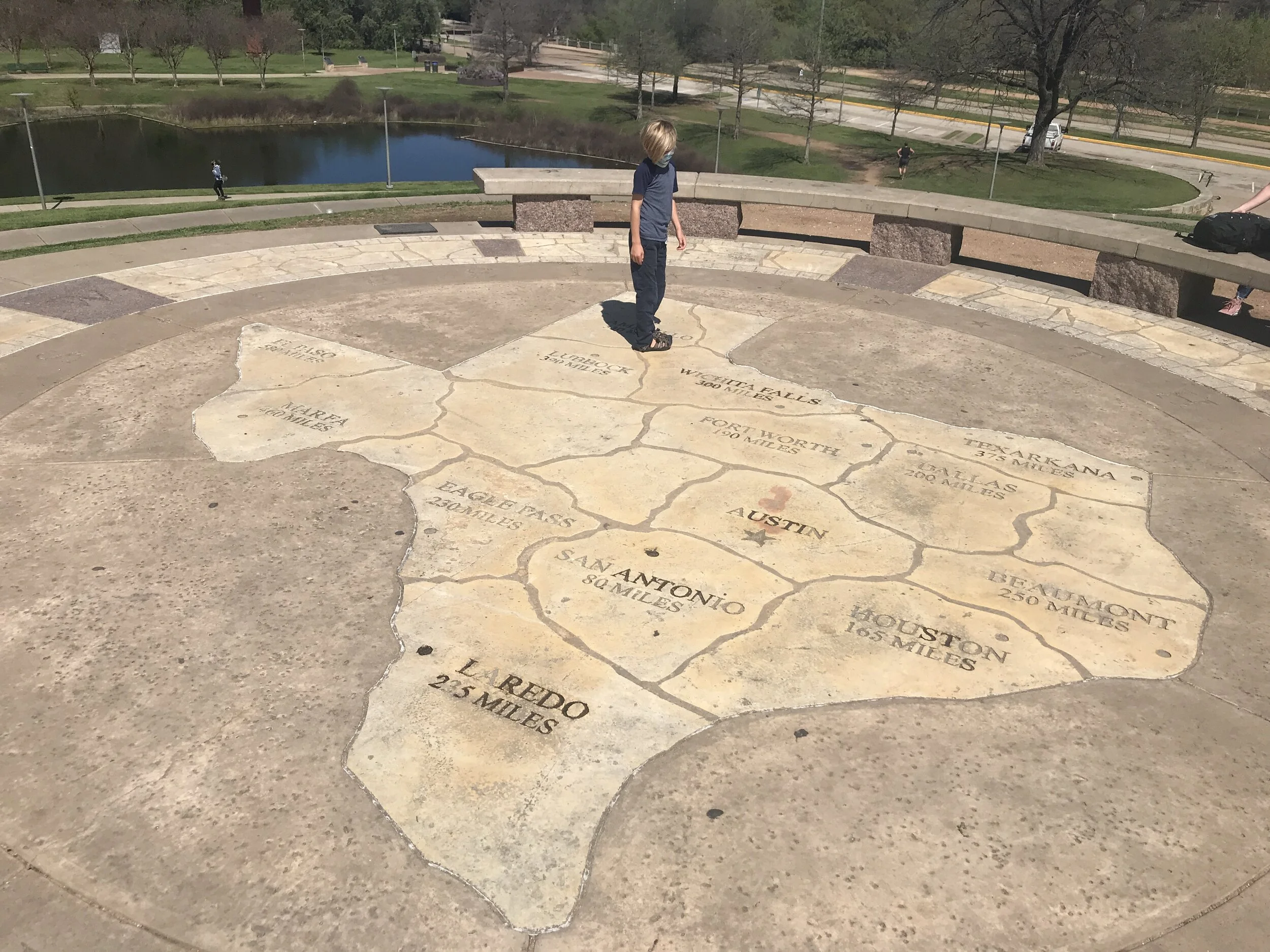It worked. During every wave we had some students or staff get infected outside of Abrome, but because of our practices none brought it into the community (which would have then spread out beyond the community).
[See screenshot of screening checklist. We will be updating the screening for the coming year.]
To not spread it if it snuck into the community we acknowledged that #COVIDisAirborne. We mandated masks whenever indoors. KF94, KN95, N95, or better. Zero indoor “mask breaks.” And folks had to go outdoors to eat.
Outdoors they had to wear masks when close to each other.
And we went outdoors for the entirety of the 2020-2021 academic year! In the Texas heat! This year we had at least one cell of people outdoors pretty much each day except when we went remote during Delta and Omicron. During very high levels of spread, everyone went outdoors.
[One OPEN SCHOOLS NOW and blue check influencer accused us of being remote most of the time, while wealthy schools “used their resources to keep kids safer in person.” Well, we are not a wealthy school, so we didn’t have those resources (assuming they meant money), and they conveniently glossed over the fact that we were not largely remote.]
We also filtered our indoor air. Each room was equipped with HEPA filtration systems or Corsi-Rosenthal boxes, each with a CADR that would deliver at least 6 ACH per room based on room volume, and 8 ACH in bathrooms. That also required calculating the volume of each room. See, maybe you will use need to know that math in the future!
“Sure, but you can only do that because you’re a well-funded private school!!”
Wrong. We are not a rich private school. Our sliding scale tuition give us only 40% of the tuition per student that the local public schools receive. We just prioritize community care!
[And that tweet was prescient as that same OPEN SCHOOLS NOW and blue check influencer attacked our plan because "MAKING ACTUAL SCHOOLS SAFER REQUIRES INVESTMENT” while completely ignoring that we did on the cheap what schools with an annual budgets that ran into the tens or hundreds of millions of dollars refused to do anything to clean their air.]
On top of filtering the air we ventilated the indoor space. We opened windows and created lots of cross flow. We used CO2 monitors as a proxy measure for ventilation. When the readings went above 650 we cranked the AC and opened the windows further, if it hit 800 we vacated.
We implemented capacity limits indoors, for each room and for the total number who could be indoors at any given time.
We also broke our community up into smaller and smaller groups/cells as cases rose. And pushed them outdoors. It is safer outdoors.
If someone would have inadvertently come into the space / group infected, the smaller cells limited the pool of people who could be exposed.
No one came in infected (as much luck as it was preventative policies) but even if they did the number they could infect was capped.
[Some critics pointed out that we were lucky and that we could not attribute no one bringing COVID into Abrome or spreading it within the community to our practices. As if we did not acknowledge that luck most certainly played a part. But luck does often favor those who prepare.]
When the CDC catered to politicians and corporations and said that local spread should not be the driver of how we choose to meet, we ignored them. When the CDC said that we could drastically shorten quarantine and isolation periods, or not require testing out, we ignored them.
[Sorry for also ignoring you, the OPEN SCHOOLS NOW blue check influencers who insist upon a one-size fits all solution that requires multi-billions of dollars of investment from the same government that is actively trying to convince us that we should just live with COVID.]
Next year we will also have a vaccine mandate except in very rare cases of medical necessity (everyone in our community is vaccinated already).
[This only got push back from anti-vaxxers. The vaccinate only crowd only took issue with everything else we wrote.]
The pandemic has really tested our community. Centering community care has put a big dent in our enrollment. But we understand our obligations toward our families, our community, and our society.
And that was the thread.
The COVID minimizers, OPEN SCHOOLS NOW people, and blue check influencers also came out in force to attack us for being too small to take seriously. Side note, the COVID minimizers, the vaccinate-only, the masking-only, and blue check influencers do seem to be causing much more harm than the COVID deniers these days. This was our response to them:
So the fact that we are a very small education community seems to really gall some people, convincing them to shout that our approach to Covid is irrelevant because of our size. Because if we don't have at least 100 enrolled there is nothing to learn from our efforts.
We are a Self-Directed Education community that rejects the practices and structures of schooling and instead focus on centering community care and honoring the autonomy of young people. We will never become a large school because we are not what most parents want. 👍
We consider ourselves to be a liberation project, acting prefiguratively to serve as a model for others to learn from and to replicate if it speaks to them. We strive to be an anti-oppressive space, and one of "a million experiments." Let those experiments propagate!
It is that mindset that allows us to center community care over white, upper middle class, reactionary insecurity. It is precisely because we are not a conventional school that we were able to focus on limiting the risk of exposure and spread through layered mitigations.
Some say that what we do cannot work for everyone because we go outdoors and then go remote when there is uncontrolled community spread. Or because we start at 10a. Or because we charge tuition.
True.
We cannot be all things to all people. We don't try to be.
We are one experiment. Ideally there would be many schools taking Covid seriously so that there were many more options for families. Even amongst district public schools. But we don't get public funding, so blaming us for not being free and available 24/7 is weird.
They angrily argue that what we do cannot be scaled up to all public school systems.
Yes. And no.
Yes, public schools, just like conventional private schools, serve power and the status quo. Even where communities overwhelmingly demand safer schools, most schools cannot even mandate masking. Our approach cannot be easily scaled up because it doesn't serve power.
But no, what we do can be scaled up to all schools because the measures are readily accessible to all who have the courage to push back against politicians and corporations, even if they have to do so in a renegade fashion. Investment is not the problem, priorities are.
The most closeminded position of all is that because of our small size that nothing we do is relevant, or somehow scaling up is not possible. What do people think schools are? Are they not large buildings, that are broken down into grades and classrooms?
Everything we do could be scaled. Mandated masking, monitoring air quality, ventilation, CR boxes or HEPA filters in classrooms, cohorting, daily screenings, quarantines & isolation that is not truncated and requires a test out, going outdoors, going remote.
Are they really arguing that layered mitigation measures are not feasible? Or are they saying that schools with tens or hundreds of millions of dollars in annual budgets cannot afford it? Or are they just telling you to get vaccinated and look away?
We'll still be here.
Cover image by Arek Socha from Pixabay












